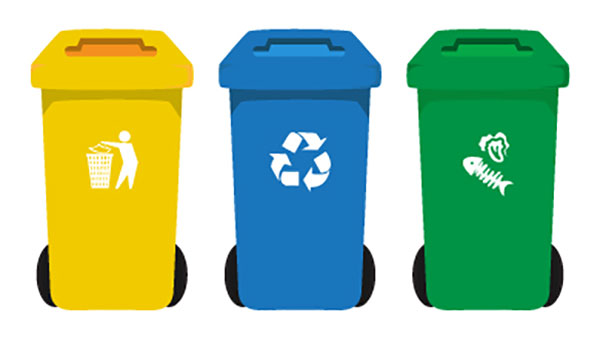Breaking It All Down

What do biodegradable, compostable, and recyclable really mean?
Your takeout customers have always demanded their hot food hot and their cold food cold. But growing awareness of the environmental impact of consumer waste means that these days, most customers are demanding even more. Not only do they want fresh, hot, food-on-the-go, they want it served to them in certified eco-friendly packaging. Dare we say it? This can be a tall order to fill! It can be hard to know which products are right for your restaurant, especially when industry buzzwords such as “biodegradable,” “compostable,” and “recyclable” remain so poorly understood. But never fear: we’re here to help you sort these puzzling terms into the right mental bins.
Biodegradable
According to the Federal Trade Commission (FTC), to earn the label 100% biodegradable, an entire product or package must completely break down within a reasonably short period of time after customary disposal. (About one year.) So even if something like a carrot takes over a year to biodegrade, it cannot claim 100% biodegradation.
There are products that can make qualified claims of biodegradation as long as they cite the studied rate of degradation. Many new packaging products are designed especially for disposal in landfills, where they degrade substantially. What’s more, in bioreactor landfills (also called wet cell), these products continue to decompose-long after that carrot has turned to dust.
The Scoop:
- Biodegradable products can be disposed of along with your other trash and then sent on its way to your area waste facility.
Compostable
A compostable product is one that will “completely break down” into usable compost and in about the same amount of time as the materials with which it is composted.
Of course, just to make things simpler, there are two different classes of compostable products:
Anything that will fully decompose in a shallow hole over by the hydrangea bush in your backyard is considered “compostable at home.”
Anything that needs help along the way (like a compostable paper cup, for instance, which probably has to be shredded to encourage it to decay) is considered “compostable in a municipal facility.”
The Scoop:
- If your operation is farm-to-table, making your own compost from kitchen scraps (but not meat, dairy, or eggs-except the shells!) might make sense.
- If not, your compostable paper packaging (and yes, those same kitchen scraps) can all be placed in a separate bin and sent to your municipal composting facility, where they exist.
Recyclable
Recyclable can be the trickiest term of all. Glass, paper, aluminum, and many different types of plastics are all recyclable. Glass can be truly recyclable-in the sense of a bottle being used, discarded, reclaimed and then recycled right back into another bottle-maybe even an identical bottle. And plastic-well, we’ve all seen those park benches made from recycled bottle caps, haven’t we?
But here’s the catch: recyclable products have to be sent to specific facilities that are designed to handle them, or else they’re just trash.
The Scoop:
- If you’re serious about recycling, you’ll need to find out which products are handled in your area and create separate bins for each material. You may be surprised at which materials are easily recycled in your community … and which aren’t.
SOURCE: FTC.gov – Environmental Claims: Summary of the Green Guides



